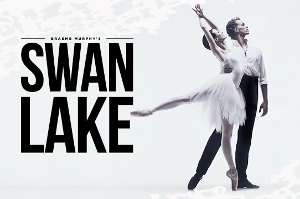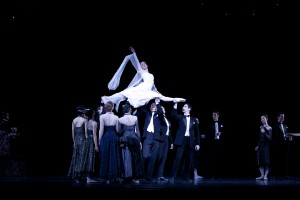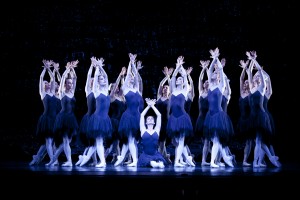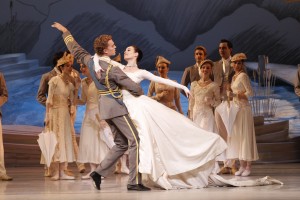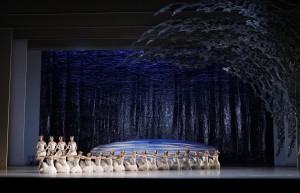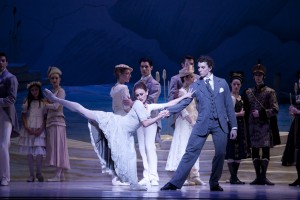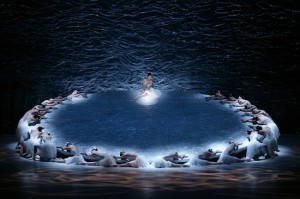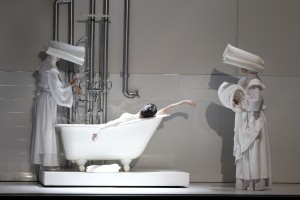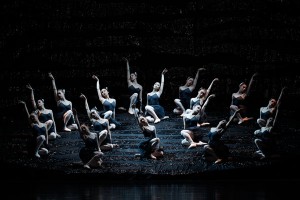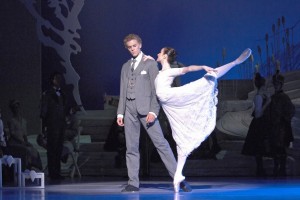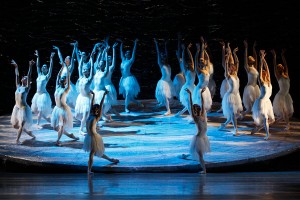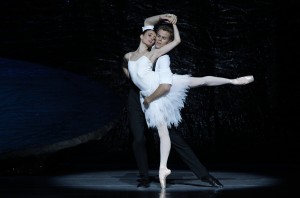SWAN IN A MILLION
Featuring a live performance by the Berkeley Symphony with guest conductor Nicolette Fraillon, The Australian Ballet’s Swan Lake comes to Zellerbach Hall this weekend, October 16-19, 2014. While this is one of the world’s favorite ballets, expect this rendition’”created by Australian choreographer Graeme Murphy’”to be unlike any that have come before. This dazzling production is one of The Australian Ballet’s most successful productions, and is one of the most featured ballets in its repertoire. This engagement also marks the company’s return to the Bay Area for the first time since 1971.
In a podcast interview, Murphy said, “You can’t avoid Swan Lake, can you? You’re sure to run into it somewhere in your life. You’d have to be on Mars not to be exposed to it.”
To understand Murphy’s highly imaginative vision better, it’s best to know the original story, which finds Prince Siegfried desiring a wife. His mother, the queen of all the land, couldn’t agree more. The prince falls in love with a beautiful girl named Odette, only to discover she lives under the spell of an evil wizard, Baron Von Rothbart. Odette’s curse is to be a swan by day and a woman at night. Her fate can only be changed by true love, but if that true love is betrayed, Odette, also known as “the white swan,” will be forced to be a bird on a lake forever.
A malevolent, imperturbable sorcerer and control freak, Von Rothbart doesn’t want his spell broken. He attempts to trick Prince Siegfried into marrying Odile (also known as “the black swan”), a virtual twin of Odette and, coincidentally, the evil doer’s daughter. The trickery almost succeeds until Siegfried, too late, realizes he is being fooled. Immediately the prince runs to the side of his distraught Odette, who is dying. The only alternative for the couple is to commit suicide. In death, they can finally be united.
The original 1877 version of Swan Lake, commissioned for the Bolshoi Ballet in Moscow, choreographed by the German ballet master Julius Reisinger, and set to Pyotr Ilyich Tchaikovsky’s timeless score, was no swan; in fact, it was declared a turkey by critics and audiences alike. Bolshoi tried their feathers at a few more productions, but it seemed no one could get this swan to fly.
Almost twenty years later, with Tchaikovsky’s music revised by the St. Petersburg Imperial Theatre’s chief conductor and composer Riccardo Drigo (Tchaikovsky had died in 1893), the new choreography by Marius Petipa (Acts 1 & 3) and Lev Ivanov (Acts 2 & 4) premiered at the Maryiinsky Theater in St. Petersburg, Russia. This version, with its romantic but other-worldly love story, captured the hearts and imaginations of its audiences. (It didn’t hurt that the star ballerina, Pierina Legnani, performed the now legendary, technical feat of 32 fouettés, a series of successive whipping turns performed on one foot, en pointe.)
Dancemakers continued to play with different versions of the basic tale: sad endings; happy endings; one woman dancing both Odette and Odile; two women taking on each role separately; two warlocks; acrobatic swans, and even all male casts (Matthew Bourne’s production). There have also been riotous send-ups from Ballet Trockadero and Barbra Streisand (in Funny Girl, she stood defiantly in a tutu, saying: “Vhat are you gonna do? Shoot the schvans? Dese lovelies?”). More recently, the movie world jetéd into the action with Darren Aronofsky’s The Black Swan, which propelled choreographer Benjamin Millepied into a stratospheric career and the arms of Natalie Portman.
Since 1895, however, these and most other productions were modelled after Petipa and Lev Ivanov, including Christopher Wheeldon’s new production, which will be the first Swan Lake for The Joffrey Ballet when it opens this week in Chicago.
At the Bay Area premiere, Berkeley audiences will be able to experience Murphy’s grand interpretation, originally created in 2002 for Australian Ballet’s 40th Anniversary. This one is loosely based on the Prince Charles, Princess Diana, Camilla Parker-Bowles saga. There is no Odile, and instead of an evil wizard lurking about with a wicked daughter, there is a wickedly slinky Baroness Von Rothbart, the prince’s older, ex-lover who has no intention of releasing her prince, now freshly married to Odette. The Baroness taunts the innocent young bride, who breaks down and is locked in a sanatorium where her fractured mind conjures swans. Will she return to claim her prince? Instead of a case of mistaken identity and deception, we are presented with a conflicted love triangle and the psychological effects of this situation on a young bride.
Murphy said that his work was never “set out to shock.” He points out that he wanted to “freshen up” the story and characterizations so that audiences would not feel “as if they are looking on something from a distance.” He wants viewers to become as emotionally involved in the story as the dancers are. When working with his Australian dancers, Murphy spoke with them about their “motivation” more than their technique. Fortunate to be working with a company that has stellar classical training, he wanted to concentrate on feeling, not positions. “The humanity is so important,” he said.
Murphy conjures a world of scandal, betrayal, and heartbreak through Kristian Fredrikson’s inspired décor, which becomes part of the choreography. Murphy has brought the spirit and scale of classical ballet into the twenty-first century with extraordinary results. I promise you, this new version of an old favorite won’t take a swan dive into obscurity.
photos by Jeff Busby, Jim McFarlane, and Lisa Tomasetti
Swan Lake
The Australian Ballet
presented by Cal Performances
Zellerbach Hall
Thursday, October 16, 2014 at 8:00
Friday, October 17, 2014 at 8:00
Saturday, October 18, 2014 at 2:00 and 8:00
Sunday, October 19, 2014 at 3:00 pm
for tickets, call (510) 642-9988 or visit www.calperformances.org
